In an era where digital marketing holds utmost importance, it’s time to embrace emerging technologies like NFTs — regardless of how daunting these digital assets may initially seem.
NFTs can provide significant advantages, thanks to their unique properties for fostering customer engagement and boosting brand visibility to create novel revenue streams.
Whether you are a seasoned Web3 marketer wanting to stay ahead of the digital realm, or a business owner who finds blockchain technology intriguing, this guide will give you a clear roadmap to effectively and ethically add NFTs into your marketing campaigns.
So, if you’re ready to embark on your own NFT marketing campaign, dig in!
What are NFTs?
NFTs are unique digital assets representing ownership of specific content on blockchain networks, like Ethereum or Solana.
However, unlike Ethereum or Solana cryptocurrencies, which are identical to each other and fungible, NFTs are non-interchangeable and distinct, hence the tokens’ name comprising ‘non-fungible’.
Moreover, NFTs can link to both digital and physical goods. Most commonly, these assets are associated with virtual real estate, music, and digital art as collectibles, with NFT ticketing becoming the new hot thing (for good reasons).
The beauty of these digital assets is that their advantages are limitless, regardless of which sector you are in.
On top of that, the ownership information of an NFT, including the owner’s transaction history and identity, is recorded on the blockchain, providing immutability, transparency, and security. Because of this, NFTs attain significant attention over having the potential to revolutionize how artists and creators monetize their work. You can directly sell to your customers through the power of NFTs, innovating ownership and building a loyal fan base.
The idea of minting your own NFTs to boost your marketing campaigns can seem complex. But, fear not — we’ve got you covered!
Related Content: How to Set Up an NFT Minting Website

Top Tips for Creating NFT Marketing Strategies
NFTs are, without a doubt, a fascinating development for your marketing agency. So, to boost your businesses NFT marketing services up a notch, here are our top ten tips:
NFT Ticketing
One revolutionary use of NFTs includes NFT tickets, VIP passes, or keys to exclusive events. Within no time at all, NFT ticketing has become a potent approach in the digital marketing world due to having significant advantages.
The strategy behind NFT ticketing includes utilizing these digital assets to open access to unique experiences tied to your brand, like music concerts, product launches, online webinars, or even celebrity meets-and-greets. In addition, you can publicize your ideas on social media channels to create demand for your state-of-the-art initiatives.
Due to NFTs being traceable and indelible to owners, they alleviate common issues regarding scalping and forgery seen in traditional ticketing. Therefore, these assets ensure that exclusive experiences remain exclusive, enhancing their appeal and value.
Interestingly, NFT ticketing goes beyond access to events and can open up immersive experiences that deepen customer engagement, further making more long-lasting memories to strengthen your connection with your NFT community.
Moreover, NFT ticketing and VIP passes are collector’s items. Because of their exclusivity, they serve as a token of a once-in-a-lifetime experience, thereby can become a piece of digital memorabilia that forges a long-term bond between your audience and brand.
Example – Formula 1 NFT Tickets

The Platinum Group recently added NFTs for its Formula 1 (F1) ticketing service, starting with the Monaco Grand Prix.
Created in collaboration with blockchain company Element and Web3 and marketing agency Bary, these tickets exist on the Ethereum sidechain, Polygon, known for quick, low-cost transactions.
These digital assets enhance the authenticity of traditional ticketing services, combating counterfeiting while offering fans unique digital keepsakes.
Attendees of the races also enjoy benefits such as post-event hospitality and future race discounts, rewarding F1 loyalty.
Collectible Items
Since NFTs are collectible items, it’s essential to note how they can be used limitlessly. Like physical trading cards, NFTs can be used as digital trading cards where each card is exclusive, holding contrasting values based on its rarity, condition, and demand.
NFTs can then be traded or sold among collectors like traditional cards, with the added advantage of verifiable proof of ownership and rarity.
Another common usage of NFTs is embedding the NFT chip into a physical item, like your brand’s merchandise or a famous painting associated with your company, essentially ‘tokenizing’ it to give it a unique identity that links to the blockchain.
Digital figurines can also be sold, traded, and acquired as NFTs, opening up games while receiving a tangible item as an advantage.
Players can also derive physical advantages during their gaming experiences because your figurine may possess unique in-game abilities or attributes that open the door to doing so.
Hence, owning such NFTs brings an element of appeal over creating a new experience while offering an investment avenue, innovatively blending entertainment and economic utility alongside physical realms, if you will.
Example – Star Wars NFTs
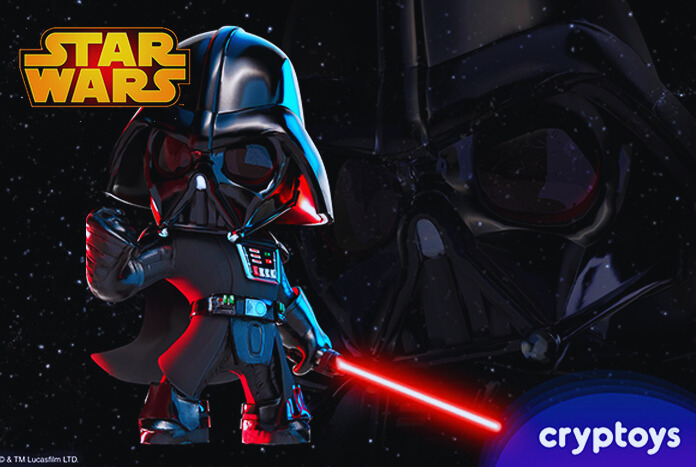
A fantastic example of NFT collectible items as figurines is Cryptoys’ new Star Wars collectible items.
The Star Wars franchise utilizes the power of Web3 and NFTs, digitally tokenizing 15 iconic characters on the Flow blockchain. Selling at $39.99 per figure, these five NFT tokens and collectibles come in ‘blind boxes’ that keep the identity hidden until post-purchase, engaging users in an exciting reveal.
These digital assets have five rarity levels, further creating value and interest. Flow blockchain’s decentralized nature ensures authenticity and scarcity.
Beyond being mere collectibles, these tokens can integrate into various digital applications in the Web3 world, like VR games or digital displays, promoting user interaction and extending Star Wars’ digital presence in the new internet era.
Gamification
Gamification is a fantastic marketing strategy and tool that harnesses the engaging elements of gameplay, like achievement and competition, to boost brand interaction further. When combining the world of NFTs, gamification can become an even more powerful marketing strategy.
To implement gamification, you must design an interactive game associated with your brand, where customers can achieve milestones and compete to earn NFTs as rewards. These NFTs can be exclusive digital art, access to special events, or open up other digital assets related to your company.
Adding NFT rewards into your game adds excitement and real value to the player experience, motivating your target market to play your games, check out your project, and interact with all you have to offer.
Example – Magic Eden
The leading NFT marketplace Magic Eden employs gamification in its marketing strategy, boosting user engagement.
The platform features daily quests that open a layer of adventure and accomplishment. On completing these quests, users claim valuable rewards, including ‘Diamonds’, a currency in the platform’s ecosystem, unlocking various perks and enhancements.
Both newbies and NFT enthusiasts use Magic Eden’s system for an inclusive and enjoyable journey. By issuing these rewards, Magic Eden successfully fosters a dynamic, motivating environment that continually engages users.
The platform’s gamification highlights top NFT marketing strategies, adding a sense of achievement and progression and adding value to users’ experience.
Virtual Real Estate – The Metaverse
Metaverse platforms like Decentraland and The Sandbox offer exciting opportunities for your marketing agency through virtual real estate.
Your crypto marketing agency can own its own digital space as a hub to engage with your consumers in an immersive environment.
The possibilities for brand expansion through the metaverse are vast. You can design your own branded environments, digital storefronts and showcase your services and products in an interactive and engaging 3D format.
However, the metaverse is not limited to static displays. These virtual realms can also host interactive experiences and events, serving as meeting spots like locations in the real world to bring your community together!
So, turn your NFTs into virtual properties and products to make them potential collectibles and generate interest and engagement from individuals invested in the digital space.
Example – Doritos on Decentraland
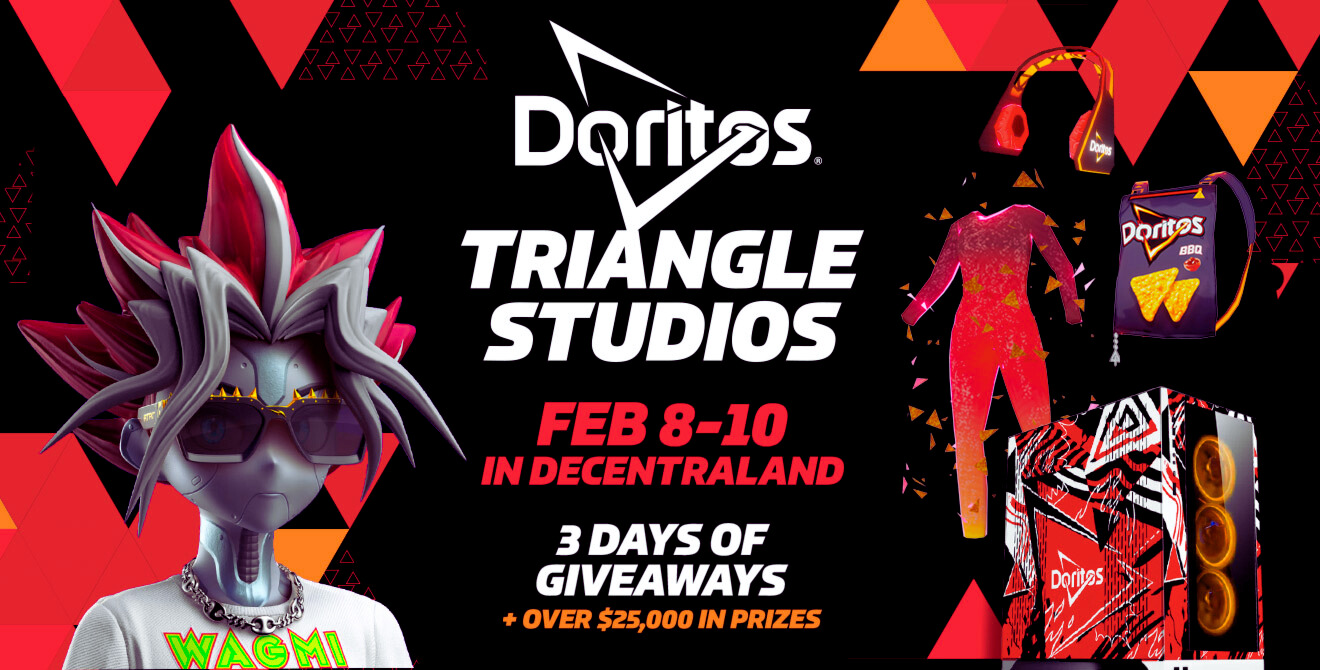
Doritos leverages the metaverse to enhance its brand image and engage audiences through activities at the ‘Doritos Triangle Studios’ on Decentraland.
The brand’s Web3 initiative includes $25,000 worth of prizes and giveaways, such as custom gaming PCs, rare NFTs, and Decentraland wearables.
Users can play mini-games, create custom music beats, and participate in competitions to win these rewards.
Additionally, Doritos offers free Polygon NFTs that can be used as wearables within Decentraland, further integrating the brand within the metaverse.
The announcement of Doritos’ venture into NFTs and the metaverse generated a lot of excitement in the community, marking a significant step toward mainstream adoption.
Exclusive Digital Art
In Web3 marketing, joining forces with artists or museums to generate exclusive digital art is a powerful marketing strategy.
NFT marketing campaigns work amazingly with creative talents or companies to help you design or boost your NFTs that are appealing, unique, and exclusive representations of your brand or art style.
Some artworks representing the best NFT artists’ advertising techniques include their brand’s color scheme, signature style, or logo. In contrast, others can showcase your art style in a fresh, revolutionary form.
Moreover, you can tie your own NFT tokens and drops to your other products. For example, your limited-edition items can be accompanied by your exclusive NFT drops and tokens, adding an extra layer of value and exclusivity.
Example – Deafbeef

Deafbeef’s LACMA NFT project, influenced by Muybridge’s work, enables the creation of unique chronophotograph NFTs from owned Noumenon NFTs, enhancing user engagement and the value of digital artwork.
The interactive, smart contract-based process of creating new, higher-resolution digital assets over time contributes to a sense of exclusivity and anticipation, boosting demand.
Furthermore, collaborating with notable artists like Calderon and XCOPY adds credibility and broadens the project’s appeal.
This project serves to invigorate classic art, blending history and modernity and attracting a broad range of widespread art enthusiasts. Thus, it effectively promotes Deafbeef’s brand visibility and relevance through competitive and popular NFT art marketplaces.
Music and Videos
Leveraging NFTs for releasing musical and video content is a novel avenue for brands in these sectors, providing new ways to engage with fans.
When releasing digital artwork, a music track, digital artwork, or film as an NFT, each digital asset becomes a unique, blockchain-verified digital asset that only your collector can own, adding to the appeal and value of your creative content.
Suppose you are a musician or have a record label. In that case, you should consider releasing limited-edition versions or remixes as NFTs to create rarity around special editions like the good old days.
On the other hand, for video and content marketing, consider releasing behind-the-scene footage, personalized messages, or director’s cuts to bring in your target audience and make them feel special.
Nonetheless, the benefits of these various other NFT platforms, marketing channels, and services go beyond exclusivity. NFT sales open up a new revenue stream, combating piracy by establishing digital ownership and creating a solid bond with fans by offering them a stake in the social media platforms they love if opening up secondary market royalties.
Example – Steve Aoki and 3LAU’s ‘Concentrate’
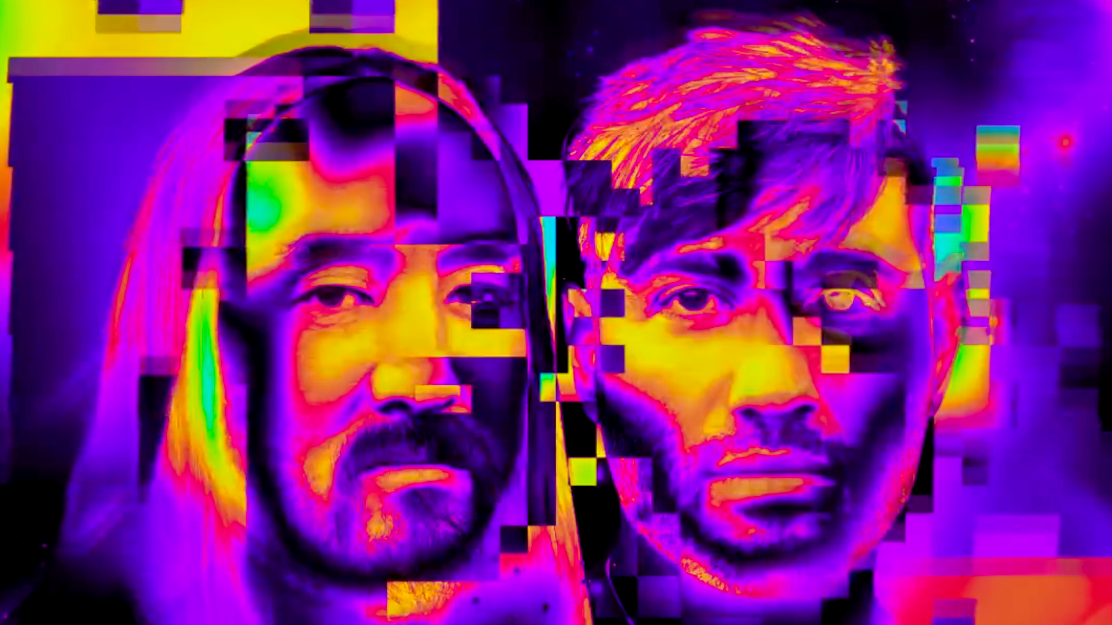
Democratizing the revenue streams of music to increase engagement, DJ Aoki and 3LA launch ‘Concentrate’, a music NFT track from their album Punx.
Both artists distribute 50% of the royalties from this track to numerous collectors, offering them success in the music’s success.
Moreover, Aoki’s virtual world, ‘A0K1VERSE’, utilizes the NFT system for incentives, amplifying fan experiences.
NFTs allow musicians like 3LAU to generate substantial revenue directly, bypassing traditional intermediaries.
By leveraging smart contract technology, music NFTs offer fans limited-edition access to concerts, merchandise, and experiences, creating a stronger bond with their audience and fostering loyalty.
Related content: Top 5 Music NFT Projects to Never Be Forgotten
Augmented Reality (AR) Experiences
Fusing NFTs and AR technology opens another frontier for creating unique, immersive brand experiences. Blending NFT, blockchain technology, and AR technology redefines how customers interact with brands.
NFTs can be used to unlock state-of-the-art AR experiences. For instance, the sneaker brand Asics created a virtual sneaker NFT collection to encourage physical activity that comes to life when viewed through an AR lens, as if you’re wearing it in the physical world.
A good idea for your brand may be NFT tickets to a concert that allows your smartphone to showcase behind-the-scenes AR content. The use cases of NFTs are endless.
By combining NFTs and AR, you can offer your customers a product or service and an out-of-this-world experience to increase engagement, brand loyalty, and a competitive edge in today’s increasingly digital world.
Example – Jack Daniels

In partnership with Yahoo Creative Studios, Jack Daniels uses AR and blockchain technology for its Australian NFT campaign.
This NFT marketing strategy merges music, whiskey, and gaming, allowing users to find ‘AR’ crates filled with rewards in their local areas.
Rewards include limited-edition content like behind-the-scenes songs, videos from popular Australian bands, and the chance to win a trip to Jack Daniels distillery.
These collectibles, minted on the Polygon blockchain, are also tradeable on OpenSea, focusing on physical engagement with QR codes and locations that target near music venues, presenting the potential of AR and NFTs in marketing.
Customer Loyalty Rewards
In today’s competitive marketing landscape, customer loyalty is a must. A great way to increase customer loyalty is by introducing an NFT-based program that merges blockchain technology with conventional reward systems.
Your NFT loyalty program can work by allowing your customers to earn NFTs based on how they interact with your brand. This could be through social media engagements, purchases, referrals, or other valuable actions. In addition, each NFT could be redeemed for your brand’s service, experience, or product.
Starbucks is a fantastic example of iconic brand-boosting customer loyalty through NFT initiatives.
Because NFTs are unique and verifiable, these NFTs can also create a sense of ownership and exclusivity that traditional loyalty points can’t match, further enhancing consumer engagement and cultivating stronger brand loyalty.
Example – Starbucks ‘Odyssey’
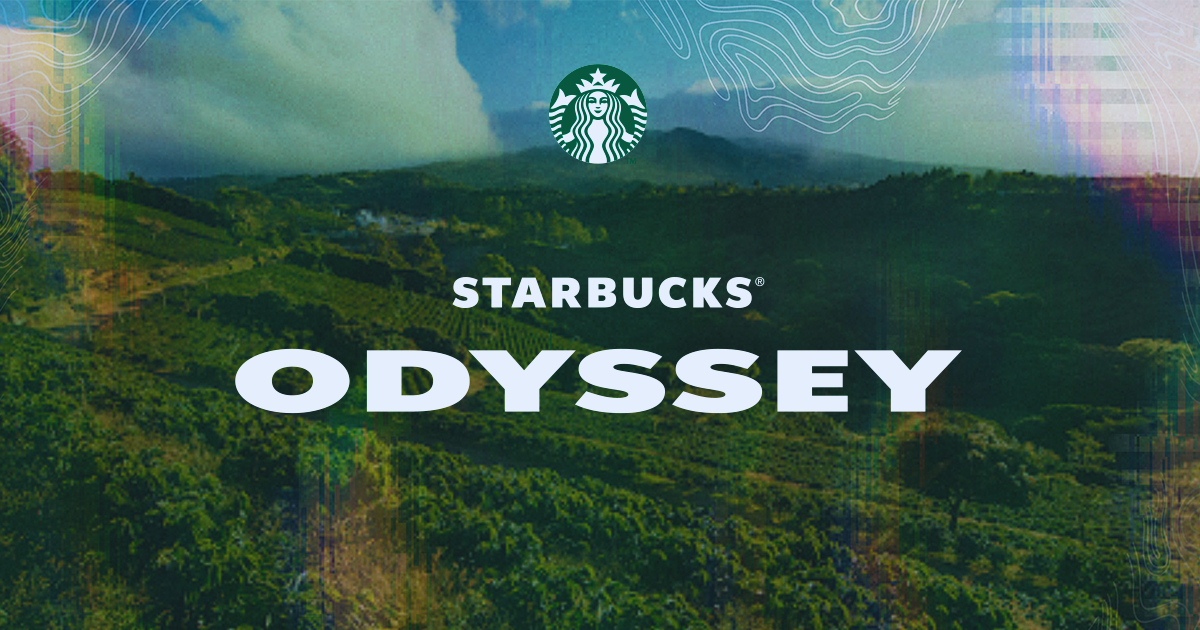
Starbucks’ NFT-driven loyalty program, ‘Starbucks Odyssey’, offers enticing rewards that link to the number of NFT ‘points’ users amass.
These rewards vary from virtual espresso martini-making classes to invites for exclusive Starbucks Reserve Roastery events. Higher-tier rewards include trips to Starbucks’ esteemed Hacienda Alsacia coffee farm in Costa Rica.
Artist collaborations and merchandise incentives further add to the allure, offering consumers a diverse, immersive reward experience. This campaign demonstrates how these digital assets can foster customer engagement and brand loyalty, setting a novel precedent in NFT marketing strategies.
NFT Marketplaces and Artists
Sponsoring the NFT community of projects, marketplaces, and artists presents a strategic change for brands to establish a more substantial presence in the Web3 world and foster new brand associations.
By using influencer marketing tools and partnering with the best NFT marketing agencies, channels, agencies, and artists, your brand can suddenly gain exposure to a creative and tech-savvy audience.
Showing that you support the NFT community and artists through sponsorship proves your brand’s love for the arts and creates goodwill in the community. Therefore, connecting with a passionate and engaged audience on various social media platforms and building authentic relationships with influencers is excellent.
Sponsoring the whole NFT industry and marketplace industry and marketplaces, on the flip side, serves as platforms for selling, buying, and trading NFTs, allowing your brand to align itself with the cultural significance and growing popularity of this virtual space.
When sponsoring another NFT artist, business, artist, or marketplace, you can collaborate on exclusive other NFT projects, artists, drops, curated exhibitions, and co-branded collectibles.
Cross-promotional relationships are fantastic for tapping into innovation and creativity while expanding your reach and positioning yourself as an early adopter of transformative technology.
Example – All Nippon Airways (ANA)
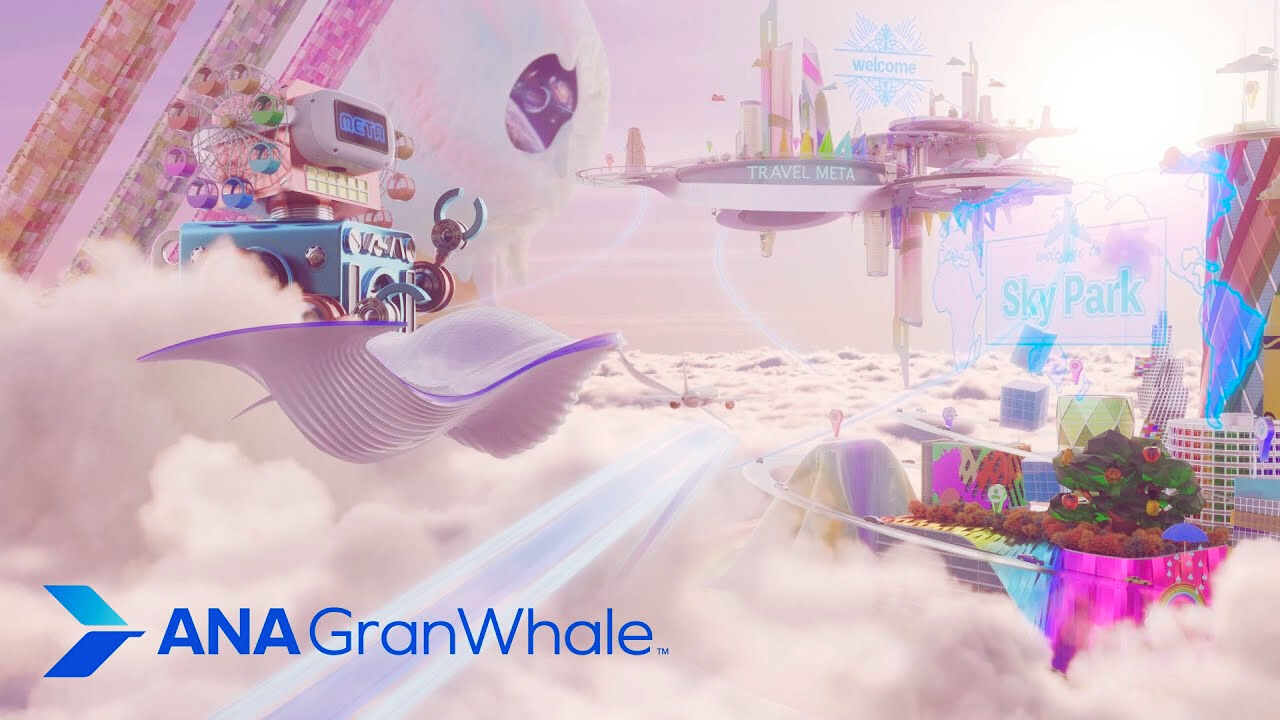
Embracing the Web3 world, Japan’s most significant airline, ANA, launched its marketplace, ANA GranWhale, for travel-inspired NFTs
To improve customer experience, ANA harnesses the power of NFTs to present captivating aerial imagery by photographer Luke Ozawa and plans for future aviation-themed NFT collections.
Beyond NFTs, ANA also explores virtual reality and the metaverse, transforming how global cultures and destinations are experienced.
ANA’S Web3 initiative positions the airline as a pioneer in merging travel experiences with blockchain technology, creating unique customer value and sparking interest in travel-inspired NFTs.
Digital Fashion
Digital fashion is another exciting element that NFT drops can open up. Brands can create and sell digital clothing as NFTs, catering to the progressive fashion world through digital and social media platforms and AR experiences.
By offering and creating digital clothing as NFTs, fashion brands can showcase their virtual selves, allowing consumers to model digital garments through avatars to personalize how they wish to develop their virtual identities.
Additionally, virtual fashion NFTs enable users to enhance their online presence or incorporate virtual fashion elements into the real world.
This new concept in the fashion realm allows designers to boost their reach beyond physical attire, presenting more opportunities for innovative marketing campaigns and tech-savvy partnerships.
Example – Puma

Collaborating with 10KTF, Puma interconnects physical sneakers with digital NFTs in the Grailed Slipstream series.
The series comprises 2,000 uniquely designed sneakers, each with a scannable chip tied to a distinct NFT.
This collaboration allows Puma Nitro NFT holders and 10KTF community members to access these unique NFTs and receive custom physical sneakers.
Plus, an exclusive airdrop of Super Puma NFTs incentivizes participation. This pioneering initiative in the metaverse, merging fashion with blockchain, signifies a fresh approach to NFT marketing campaigns, appealing to collectors and fashion enthusiasts alike.
Conclusion
In short, the digital nature and uniqueness of NFTs open the doors to a plethora of creative marketing strategies, ranging from NFT ticketing, collectible items, gamification, virtual real estate, exclusive digital art, music and videos, AR experiences, customer loyalty rewards, other NFT platforms, marketplaces and artists, and digital fashion.
Such versatile uses make these digital assets a fantastic tool for shaping marketing strategies and catering to a growing audience that values ownership, security, and digital experiences.
We at Coinbound, an experienced NFT marketing agency, can serve as a strategic partner in maximizing the opportunities of your own NFT marketing campaign or campaigns. Having expertise in the Web3 realm, we can assist you in navigating the intricate landscape of NFTs, providing tailored solutions to heighten your marketing efforts.
By understanding your target market, we can ensure that your NFT marketing strategy resonates with your target market, successfully driving the integration of NFTs into your marketing strategies and creating a strong NFT market and community.
The power of NFTs combined with our expertise can help you shape the future of your brand’s digital presence — get in touch!








